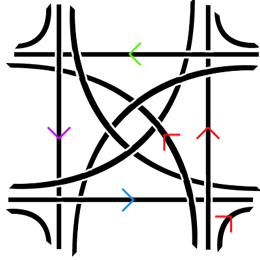A Single Version of Truth
There is a certain elegance to a belief that a single version of truth exists; that, by following a deterministic, codified process, we can definitively answer questions; that, in the face of a disagreement, you and I can discuss our way to the correct answer, whereby one of us is right and the other is wrong. A single version of truth would certainly provide comfort and confidence to any relationship, any team, any organization.
The organization I worked at held a firm belief that there exists a single version of truth. It took much longer than it should have, but I've thought and experienced enough to vehemently disagree. There is no single version of truth.
And I'm not talking about the results of Gödel and the like who proved that some statements are unprovable. This is one fact that my mathematician friends, with a detectable grin on their faces, used to always bring up as I was going through my period of agnosticism. The problem with using that as an argument is that while it's mathematically correct, it doesn't really help me in everyday decision-making. Statements whose truthiness I wanted to ascertain were not crazy self-referential constructs built to make a point. They seemed much more "real life".
I'm also not talking about visibly nondeterministic statements such as "It will rain five week from now". Of course, if the processes involved are chaotic (nonlinear) and the statement is a prediction or in some other way requires the collection of a large body of data, there is no clear truth.
I'm talking about these nice, "linear" statements that you may encounter at home or at work. The kinds of statements your boss makes and convinces you that they are truth – i.e. that they can be derived from facts using logic.
The problem is that logic is not the mechanism by which truth is created from nowhere; logic is simply the process of transformation one statement into another statement that has the same truthiness. Logic, in short, is the creation of equivalent truths. And in most "real life" conversations we don't start with facts; we start with our individualized set of axioms–assumptions that we believe to be true.
I've witnessed countless occasions where smart men and women performed logical jujitsu, totally blind to the fact that the points they were starting from very different assumptions, disagreeing at a fundamental level of basic assumptions and philosophies. The problem is that we rarely state these assumptions. Here is a good exercise: list, say, fifteen axioms that guide you in life. Odds are, you will find it very difficult. Axioms are tacit knowledge, something we accumulate over long periods of time. I would argue that our axioms are a manifestation of our wisdom.
Even if we are self-reflective (and honest!) enough to see that, we trick ourselves thinking that our philosophies are by and large equivalent, and so we're starting from the same point. Wrong! Axioms are derived from our philosophies in a messy, nonlinear, nondeterministic way. These derivations are full of biases. And the philosophies themselves – the most fundamentally held beliefs – are highly individualized, and often impossible to describe in words. So how can I claim that my philosophy, let alone my axioms, is consistent with yours?
"Is it true?" is therefore relevant only given a particular individual's background and the context. In other words, there isn't "the" truth -- there are many truths based on our assumptions and backgrounds. A blind belief in the notion of a single truth is therefore particularly dangerous, because it promotes intellectual bullying – the ability to outlogic someone regardless of the quality of the statement itself. In fact, environments that tend to believe in a single version of truth also tend to specialize in people who are good at debates – erudites who know the tricks of logic and have mastered the art of pseudoproof, the sleight of hand-waiving or the placement of the unsound (and critical!) logical leap on a page break.
No, I'm not advocating to abandon logic whatsoever. In general, being able to use the laws of logic to make decisions and to communicate is arguably the most effective way to achieve good outcomes. However, a shallow understanding of "logical thinking" can be detrimental. Logical thinking is nothing else than the process of manipulating statements in a way that preserves their truth value. So what should individuals and organizations do? Invite others to a discourse but be open to the idea that whenever we converse, we start with two different sets of assumptions, and thus consequently we can both be logical but arrive at wildly different results. Spend less energy engineering logical transitions, and more energy digging into the underlying axioms. They are likely different. When you notice a difference, work on resolving it. Perhaps we can avoid the jam and pick a subset of our assumptions that we do agree on, assuming that we can deduce a relevant decision. Or maybe we can both compromise and merge our axioms into one set (so long as it's consistent!). Most likely, whoever is responsible for the decision gets to call the shots – but this time, everyone is clear on how a decision was made and was it was conditional upon. That way, if the outcome backfires, the decision-maker can trace it back to her axioms and refine them, rather than creating an illusion that it was not the fault of the decision-maker.






